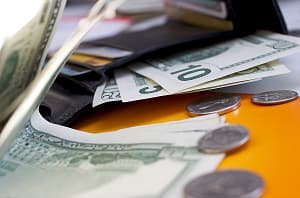The U.S. dollar has recently shown signs of weakness after a period of appreciation in mid-year, where it gained more than 4% against other currencies.
However, this strength almost completely faded when interest rate futures began to reflect expectations of significant easing by the Federal Reserve (Fed).
This expectation of rate cuts was driven by labor data suggesting an economic slowdown and comments from Fed Chairman Jerome Powell. Despite this, the dollar is expected to remain stable over the next three months, as the markets have largely priced in expectations of cuts.
Volatility in financial markets is expected in the coming weeks, and labor data will play a crucial role in determining the Fed’s monetary policy.
A possible rebound in job creation in August could influence the Fed’s decisions at its September meeting, where a 50—or 25-basis-point interest rate cut is being debated. While the dollar remains a highly valued currency, the speed at which the Fed adjusts interest rates compared to other central banks could be a key factor in maintaining the dollar’s short-term stability.
Despite the dollar’s recent weakness, some speculators in financial markets have begun betting against it. However, most analysts believe that the dollar will remain stable or may even experience a slight rebound. The expectation of a 100 basis point rate cut is seen as excessively aggressive and unlikely, with a more moderate forecast of 25 basis point cuts in upcoming Fed meetings. This outlook suggests that the dollar’s recent weakness has been exaggerated, especially because, although the economy is showing signs of slowing down, there are no clear indications of an imminent recession.
In conclusion, the dollar’s stability over the next three months will largely depend on Federal Reserve decisions and the evolution of labor data. Despite expectations of interest rate cuts, the dollar could remain stable as markets have largely anticipated these moves. The U.S. economy, while not without challenges, shows no signs of a deep recession, which could prevent a significant weakening of the dollar in the short term.





Leave a Comment